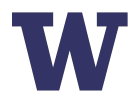

|
eWaCH.net - enhancing Washington's Climate and Hydrology Networks
Workshop Summary and Action Plan
On June 15, 2007, the inaugural workshop of eWaCH.net took place in Seattle at NOAA's Sand
Point facility, hosted by the National Weather Service and funded by Washington Department of
Ecology and NOAA's Regional Integrated Sciences and Assessment (RISA) program. The purpose of
eWaCH.net is to make better use of existing observation networks for purposes of climate monitoring,
drought diagnosis and prediction, and streamflow forecasting on timescales from days to months.
The workshop began with a description by Kelly Redmond (WRCC) of about a dozen networks currently in
operation in Washington (Appendix A), and general advice on establishing and maintaining networks.
He also discussed costs and benefits of new stations and the value of an entire network vs the marginal
value of a single new station.
Roger Pulwarty contributed a presentation (in absentia) on NIDIS, the National Integrated Drought
Information System. Prompted by the Western Governors' Association, NIDIS was established by federal
legislation in late 2006 and seeks to coordinate drought information among federal agencies in order to
provide users with decision support tools to identify and manage emerging droughts. In its early stage it
includes plans for five pilot projects; the Pacific Northwest is on the list of probable second-stage pilots.
NIDIS provides little money for observations but there is some prospect for leveraging the "enhancement" aspect
of eWaCH.net with NIDIS money. There are also synergies between NIDIS and eWaCH.net in the emphasis on
observations/monitoring and medium-term forecasting, e.g. the west-wide hydrologic forecasting system implemented
at UW by Andy Wood.
Andrea Bair described the NWS plans for modernization of the Historical Climate Network. Nationwide
1,000 HCN sites are slated for modernization by 2013; of these, 32 are in Washington
(Appendix B).
Chris Fiebrich described the Oklahoma Mesonet, how it came about and some of the challenges in maintaining
it, both technically and politically. Its success stems from several factors: (1) Standardized hardware, siting
and maintenance procedures at each site; (2) Reliable two-way communications with each remote site and near-zero
ongoing communication costs; (3) Aggressive data quality control and quality assurance procedures; (4) Tailored
products, relevant to each sector of users; (5) Strong educational outreach programs that support individual user
groups with a variety of products; and (6) Data of research quality, provided in real time.
Discussions
Climate networks
- Another avenue to consider is the integrated role of weather and climate observations in testing climate
models, on the one hand, and the role of climate reanalysis (using those same models) in assessing the quality of
observations and the strengths and weaknesses of networks on the other hand. Also need ocean observations to do
good climate modeling. Cliff Mass and Greg Hakim (UW professors of Atmospheric Sciences) have projects for assessing
station and network quality.
- Other QA/QC tools developed at OK mesonet, also ACIS (Applied Climate Information System).
- Growing citizen weather data (e.g. Weather Underground) - how should these be incorporated? What about
examining the quality of such stations and "certifying" some as high-quality?
- Most applications require data that are relatively accurate, not absolutely accurate
- Costs for installation: $21K OK mesonet, $38K Coop.
- USHCN siting: quality of site and of data, long-term consistency, special value (e.g. mountain sites).
Need complete site photography (16+ directions, 8 compass points toward and away from station). WFOs don't have
many site photos but might have some. Develop a grading scheme as with NERON.
Hydro-climate networks
- Need better groundwater monitoring.
- WA Dept of Ecology is working on naturalizing Columbia Basin streamflow (HB 2860)
- SNOTEL network - NRCS adding several new SNOTEL sites. avg site maintenance cost is $2500/yr, but
personnel are near limits for number of sites in the state - simply paying NRCS for site maintenance of new
sites may not be possible - "soft" money cannot pay for new staff
General remarks
- Funding: need to identify long-term funding sources to ensure maintenance
- Private industry may have a stake in this effort - e.g., energy industry, insurance.
Sprinkler company co-funding Agrimet to use the data for automatic water systems.
- Other potential partners include tribes, municipal water suppliers, fisheries.
- Attempt an economic valuation of the networks
Action List
- HCN modernization: provide recommendations to NCDC on the list of HCN sites slated for modernization.
- photo documentation of all 48 HCN sites - WFOs may have some
- rating them by quality and value
- considering additional needs (e.g. mountain sites) for recommendation to the State for modernization
- which sites need to be moved to be climate-quality
- GIS study - where they could be moved
- Homogenize HCN and Coop precip records
- apply to the State for funding - would support Columbia Basin water supply planning
- Soil moisture/SNOTEL/groundwater sensors
- Evaluate where best to deploy new sensors using VIC forecasting
- Approximate priority list
- Quality check the citizen weather observers to determine which might be worth considering for climate monitoring purposes
- Use gridded analysis to redesign network
- Perform economic analysis to estimate the cost/benefit ratio for various levels of effort (NRCS has an economist who
does this for SNOTEL/water supply forecasting)
- Engage with federal and tribal partners
Updates
2009 Update - An August 2009 newsletter with updates on items discussed at the 2007 Workshop.
Related Links
Appendix A - climate-relevant networks in Washington
Appendix B - Washington COOP stations currently slated for HCN modernization
Appendix C - participant list
Download a copy of the workshop summary and action plan
Workshop Agenda - copies of the presentations
NERON (now HCN-M) - NOAA's Environmental Real-time Observation Network
COOP Modernization - original modernization plan
NIDIS - National Intergrated Drought Information System
|



